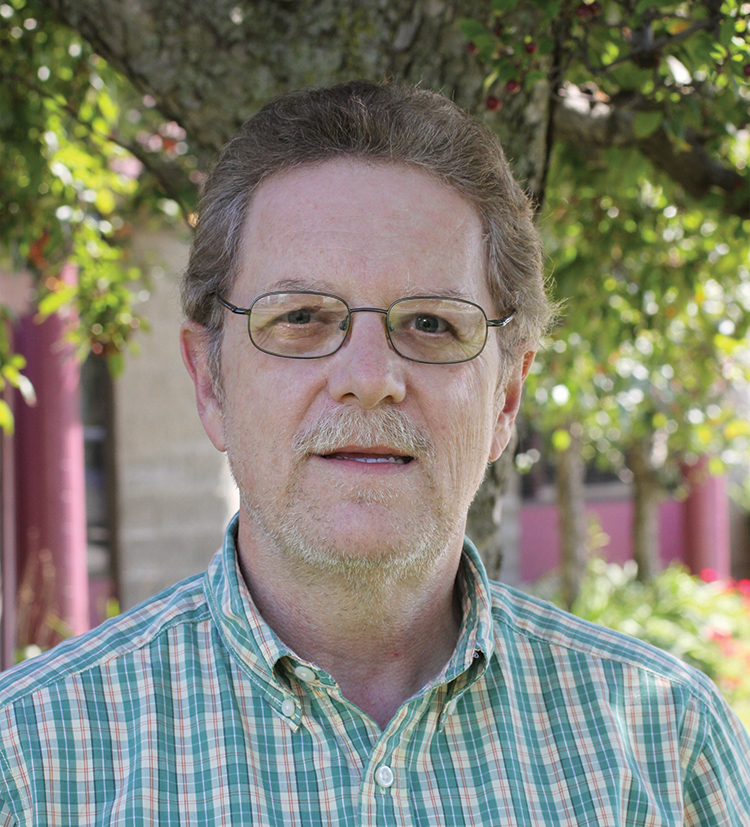
The three letters in the company name stand for “Paul and Sue Barton” (he and his wife of over 50 years). Founded in 1972, PSB is located in Pickering, Ontario Canada, and Paul’s work both at the NRC (National Research Council of Canada) with Floyd Toole and independently has helped shape a continuing advancement and revolution in loudspeaker design and performance. Now, as part of the Lenbrook Group of companies, Paul continues to spearhead design and development on his namesake brand but also assists sister company NAD with the development of certain products. In 2018 Paul was honored with a Lifetime Achievement Award at the Toronto Audio Fest commemorating his almost five decades of work in loudspeaker design.
I’ve met Paul on a few occasions at various audio shows and he has always been an engaging person to talk to about audio topics of all kinds. He was gracious enough to agree to a phone interview in late May while the COVID situation was in full swing and everything was locked down. Even after all that Paul Barton has contributed to the audio scene as we know it, he shows absolutely no sign of slowing down!
You started PSB back in 1972 (that’s 48 years ago now), in your opinion what is the most significant thing that has happened in loudspeaker development over that time?
Well, you know I think the most significant thing that I learned was in understanding the research and the approach to designing loudspeakers that really turns what was originally kind of an art form into a science. It boils down to trying to quantify and qualify sounds, and human responses to those sounds, and then correlate those things. This is done through listening and then measuring and seeing if there are any consistencies. That’s what we learn from.
Up until I started going to the NRC, not much work had been done in that area. Back in the day, speakers often were described as having an East Coast or West Coast or European or English sound or other different manifestations that correlated to different countries. And when you think about it, it sort of begs the question; well, do human beings hear differently in different parts of the world? Based on how a speaker’s sound was classified before our work at the NRC, that’s what one might have thought!
In reality, the ultimate goal in sound reproduction, and the premise of all of this, is that the speaker or the system that you’re playing back music on should be totally transparent to the original intention. Or to what the engineers, musicians, and producers heard when they said “yes”, this is what we want in the final mix. An expression that I often like to use is that a speaker is like a clear glass through which you see the real colors of the event in their natural hue and value. By putting some kind of character in the speaker or in the system itself, you end up coloring that window so that now you see everything through that filter and that’s not what the intention of any good loudspeaker should be. It should be to produce the same acoustical event that the producers, musicians, and engineers recorded. And, based on that premise, a lot of valuable research was done at the NRC, of course.
Going back to that whole “East Coast vs West Coast sound” for a minute, how did those Canadian speaker companies that used the NRC research in the 80’s change the game from what had been done in the ’60s and ’70s?
All the other Canadian companies that you referred to in your question (companies like PSB, Energy, Mirage, API, and Axiom), what we all were doing differently was that we were applying the knowledge that was being gained by making the speaker measure and perform so that it became the clearest glass that we could produce. And that was correlated when we were able to do measurements and cross-correlate those measurements with listener preferences. That was all the research that Floyd (Toole) was doing when I first started going to the NRC in 1974 and it continued right through until Floyd left the NRC in 1991 to join HARMAN. Over that period Floyd wrote many AES Journal papers on the topic and on the research that was being done, that he was heading up at NRC, and that the Canadian companies were participating in. As a result, we came up with what seems to be today, the information you need along with measurements you need to do to create a speaker that is what we call “True to Nature”. That is a speaker that is true to the original performance and takes nothing away.
So, does that mean that the research at the NRC not only had to do with what ultimately made a good speaker but what listener preferences were as well?

Well, this is where we get into the two different aspects of the methodology that we use when designing speakers. There are both objective measurements and then the subjective measurements that we use. In the research that Floyd did, there were scientific experiments done that quantified and qualified listeners, and those tended to correlate to our objective findings of what made a good neutral sounding speaker and what didn’t.
Regarding personal preferences, let’s say a person likes a particular genre of music and that music may have boosted highs or boosted bass. Well, speakers shouldn’t be designed to cater to just a particular genre of music because not everything is going to benefit from those boosted highs or bass nor should a speaker company dictate that sound profile for everybody out there. Never mind that there are other variabilities of what was done in the recording studio because, as we know, recording quality and artistic taste varies widely. Personally speaking, a PSB loudspeaker is going to deliver something true to the original recording. And, starting with that baseline, a person should then feel free to adjust the bass or treble as they wish to suit their taste.
When we do listening tests we use a variety of people. And there have been studies done under Floyd’s guidance and HARMAN that survey people from all nationalities around the world and the conclusions are that most of the people, most of the time, agree on the relative qualities of a group of loudspeakers. It’s also been shown that musical taste and music experience are no prerequisites for being a good judge of sound. And as I mentioned before there is a strong correlation between the subjective measurements of loudspeakers and the objective measurements of loudspeakers. So, there’s a correlation between listener preferences and measurement and, now knowing that there is a correlation between those two means we can design speakers that are very close in the ballpark to what the final product needs to be. And then, once the speaker is designed and voiced via measurements, we do listening, which allows us to finesse the final details because there are lower-order effects that are not necessarily bourne out just by measurement alone. All the work that’s been done in the history of NRC and all the participants like PSB and the other companies, got us to this point. It makes designing much more efficient. I mean you can design a loudspeaker if you just listen to it, but it takes a very long time to sort out everything
So, it’s good to do measurements. Knowing what the measurement target should be, in general, and then listening after you achieve that from the measurements gets you to your desired result. But that’s also not to say that a speaker from PSB versus a comparably designed speaker from Paradigm versus a comparably designed speaker from Axiom for example is going to sound the same, right? I mean you’ve all conceivably followed the same design methodology.
At that point, it comes down to my personal take on how I do the final voicing versus how other companies do the final voicing. The whole concept is still to produce something as true to nature, true to the original recording as possible. In the end, there will always be some variation to how each of us finesses those final details. One thing that can really vary the equation, and is another variable that we have no control over, is the environment that the speaker will be put in. And as you know very well, it is a big contributor to how you actually hear what the system sounds like. That’s where we like to advise owners to help ensure that our speakers will sound as good as they can in a variety of situations.
So, after all this time, what motivates and drives you to keep doing what you are doing?
Well, I guess it gets back to why I got into this business to begin with, and why I’m doing what I’m doing is the same reason that I got into it. It all started with my background in music and when I was very young, I studied violin quite intensively. So much so that it became a significant part of my life and, as you’re developing as a young person, especially when you’re like five or six years old your brain kind of gets wired for music and that passion tends to stick. Usually, I don’t know what other people experience, but music is a very powerful thing in my life. It affects me like nothing else and when I enjoy and listen, and early on when I was performing music, there is nothing really to compare to it. So, with that love of music, I continue to do what I do because music is always around.
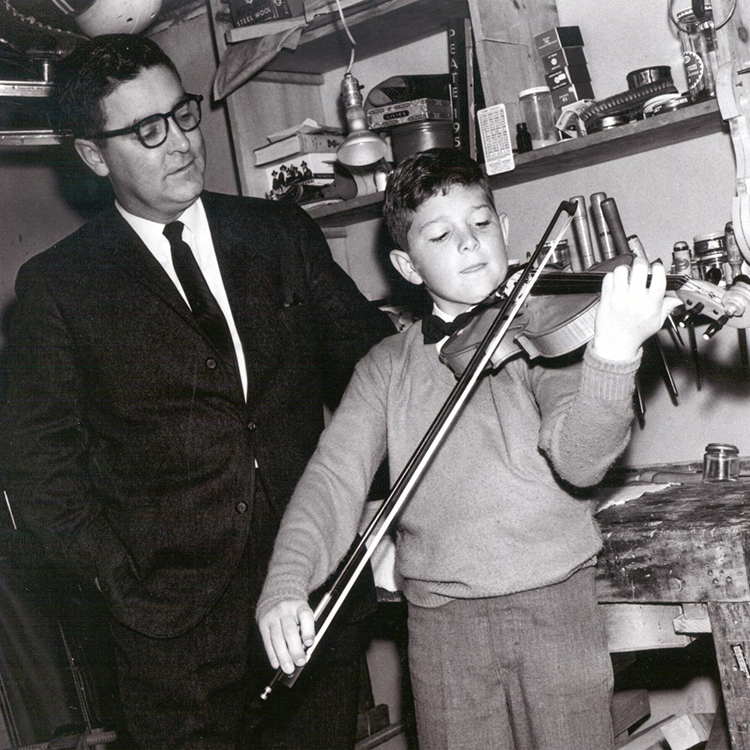
My father was really into woodworking and he made me my first full-size violin when I was 11 years old. And so, I really grew to appreciate not only the music side of the equation but the woodworking side and what was involved in the creation of music too. You know, my father was actually a musician as well. He was a tenor, so much of what he was doing was operetta and opera singing so that was another way that music was always around in our house. It was only natural then that the two of us decided to build speakers for our house in his woodshop after he had made my violin. That’s how I got started.
So at what point did that desire for music performance veer towards the side of music reproduction?
I soon realized that in the musical community that I was very active in, to go on to become a career performer seemed at the time to be very inefficient, very challenging, and competitive. Along with that, the recording industry was starting to blossom and what that meant was that it requires fewer and fewer musicians to satisfy more and more people. I started re-thinking about what kind of career I wanted to go into and I made a conscious decision to shift into music reproduction instead of music production and approach it from the other end.

As a matter of fact, in the early days of PSB around 1975, we partnered with another fellow who wanted to build a recording studio. So, I designed and built a recording studio that we put in our original factory, upstairs. And so, during the day we would be making speakers in the factory and then at night time we’d be up in the studio recording music. We ended up bridging both ends of the production and reproduction chain in those early days.
You’ve already touched a little on how you approach speaker design, what changes when you are looking at designing headphones?
Everything I’ve just told you about loudspeakers, in the approach and the philosophy behind what I think a speaker should be, I’ve also tried to apply to headphones. But headphones are kind of a particular circumstance in that when you have the engineers throughout the recording and mastering process making their decisions and final mixes, they are monitoring through direct-radiating loudspeakers. That adds the effect of the room on their decision making and impressions. So now if you take that same music that was mixed and balanced for playing back in a room and you play it back on a perfectly flat-tuned headphone, we no longer have the room. The headphone experience won’t be the same as the in-room experience with the identical piece of music. So, when I design headphones, I’ve come up with a certain tuning that is based on research that very much agrees with the work that was done at HARMAN by Sean Olive. That research studied headphone frequency response and listener’s preferences and you know we both kind of came up with the same conclusions. Which really isn’t a surprise since we all came from the same working group, so to speak, at the NRC.
And this brings us to your development of RoomFeel…
Yes. What I do is I take what I think are the effects of the average room on a good direct-radiating loudspeaker and apply that same effect in the headphones. We are basically altering the target frequency response of the headphone to include what effects the room has when you are listening to a loudspeaker playing music that was recorded to be played back on speakers in the room. I think this gets the listener closer to the original intent of the music since you don’t find many recordings (binaural being the exception) that were created to be played back through headphones alone. This is what our RoomFeel technology does.
The use of active speakers is becoming more common with audiophiles. Do you think this is where the future lies, or do you see more interesting things that could be done with DSP and speakers that aren’t being done yet?
Oh, I think the landscape going forward looks pretty interesting and challenging because of what you just said. I’m speaking specifically of applying processing and having the speakers and electronics be self-contained as a closed system. From a scientific and a technological standpoint that is almost always a better way to go rather than having an open-ended system. Now audiophiles tend to like open-ended systems because they can play with it and mix and match and personalize it. So I don’t know, going forward, how appealing closed systems will be for the die-hard audiophile who wants to play. But when it comes to the professional who doesn’t want the bother and wants to truly get ultimate performance, I think that there is a great future for those customers and the companies that are going to produce a product that will give them those results.
And you know, PSB has experience with using DSP in our headphones and our subwoofers and, being part of the Lenbrook Group (along with NAD and Bluesound) allows us to work with, and benefit from, the DSP experience that those companies have too. Beyond that, I can only say at this point that “active” definitely is on our horizon and PSB will be participating in that activity in the not-too-distant future. I can’t say anything more specific than that, but the future is very clear to me and it’s very exciting!
As a concept, something that would be interesting to me, would be a closed system, say an active pair of speakers or a unified surround system for example, that could easily adapt its performance to the environment of the end-user. We have been seeing the beginnings of this for some time now via the room correction systems of various AV receivers. But a unified and self-contained system that could take advantage of the latest technologies and push the envelope of DSP to be an easily adaptable and configurable system for a customer, that doesn’t require a lot of tweaking or playing around with would be ideal. Add to that, the idea of closing the recording-to- playback loop. Imagine if when you downloaded your latest favorite music track or album, it was embedded with metadata that specified the exact recording and mastering circumstances to your system and it subsequently adapted to reflect those circumstances so that you would experience exactly what was approved in the studio. That, to me, would be the ideal closed system approach. Delivering that level of certainty in the final result, whether it be in your home, on your headphones or in your car would be the ultimate goal. Of course, there should be provision for an end-user to customize the sound if they wish but in a perfect world, everyone should have the music that’s true to the source as the starting point. We are a bit of a ways away from that yet.
Out of all the speakers that you have designed over the years, do you have a personal favorite?

Well, we all have our favorites, but I tend to look at many of my speaker designs as milestones more than favorites. Even before my time at the NRC, while I was attending university and working in the co-op portion of my studies, at night I had designed and built a speaker called the BETA II. And, funny that we were just talking about active speakers, the BETA II was an active design. While it used external amplification, the speaker had a built-in preamp inside. What the preamp did was it had a circuit that compared the incoming signal to the speaker with the signal from an accelerometer mounted inside the driver’s dust cap. I could monitor the differences in those signals and then adjust the amplifier output signal that drove the speaker driver to help compensate for those differences.
So basically, you created a Servo system in your speaker.

Precisely! And I did it way before Velodyne even got started with servos as I designed that speaker in 1973. We built that speaker and it was in production until 1980, so for seven years! I would certainly call the BETA II a favorite because, in those early years, it really differentiated PSB from the other bread-and-butter speaker companies of the time.
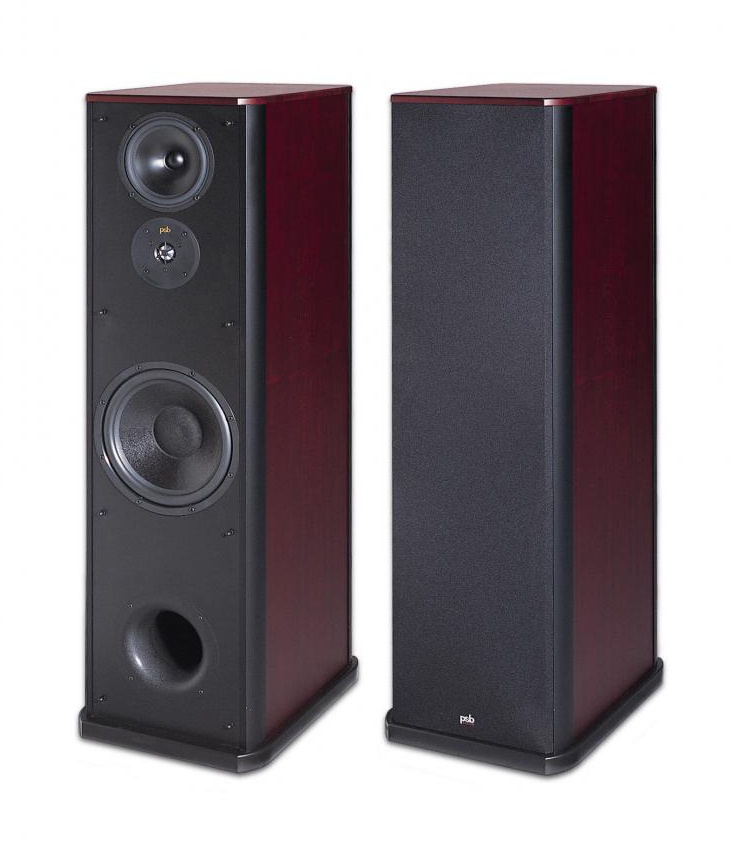
The next major milestone speaker that I have a lot of affection for is the Stratus Series. Around 1991 we had a model called the Stratus Gold which was a 3-way tower that had a 10-inch woofer, a 5-and-a-quarter-inch midrange, and a one-inch aluminum dome tweeter.
I remember hearing the Stratus Gold in a dealer showroom in Northern California in the early ’90s. I recall being really impressed with the imaging of those speakers and just how great and enveloping they sounded to me.
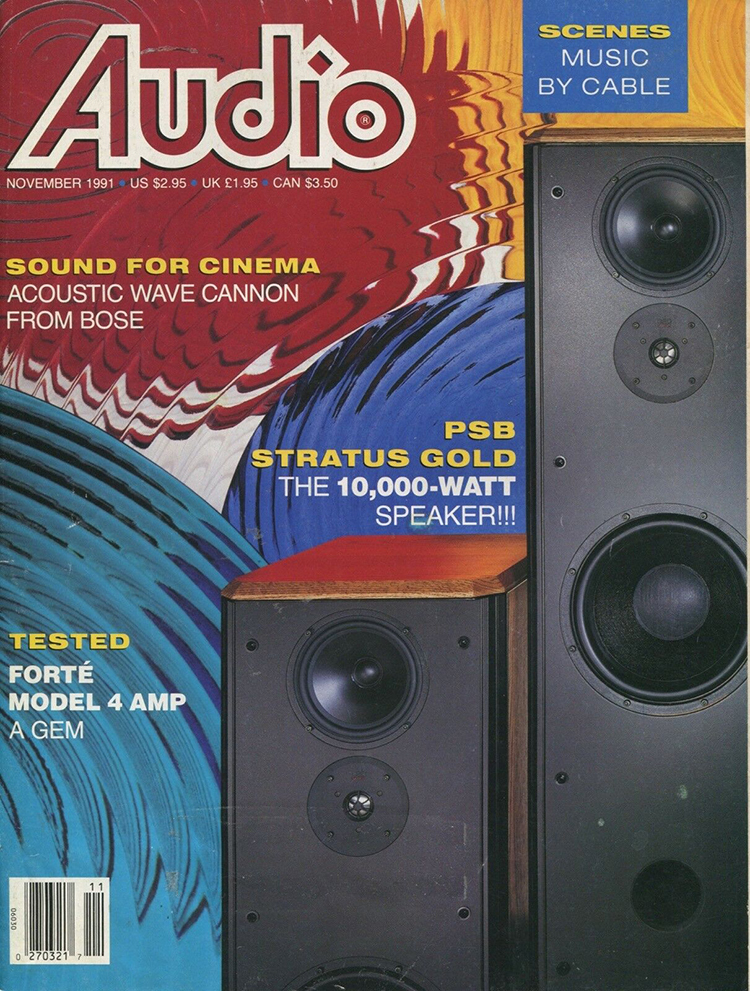
Yes, they got very well reviewed at the time. But there was one review at Audio magazine written by Don Keele that kind of says it all about that speaker. At the time Don worked for Crown Amplifiers and in his speaker tests, he would use a powerful Crown amplifier when bench testing. When we submitted the Stratus Gold sample for testing, Don put it through this dynamic signal test where he would send short, low-frequency impulses to the loudspeaker at increasing levels to see how loud the speaker could go before it would get nasty and misbehave. The impulses were short enough that they wouldn’t blow the driver, but they would stress it enough to be dynamically capable. So, Don’s Crown amplifier, into 4-Ohms, could dynamically produce about 10,000 watts. And when he did his test on the Stratus Gold, he told me afterward that he was able to turn the Crown to its fullest output, he couldn’t turn it up anymore, and at that level, he could not get the Stratus Gold to misbehave! On that issue of Audio magazine, they had a picture of the Stratus Gold on the front cover along with the headline, “The Ten Thousand-Watt Speaker!” Needless to say, I was very pleased!
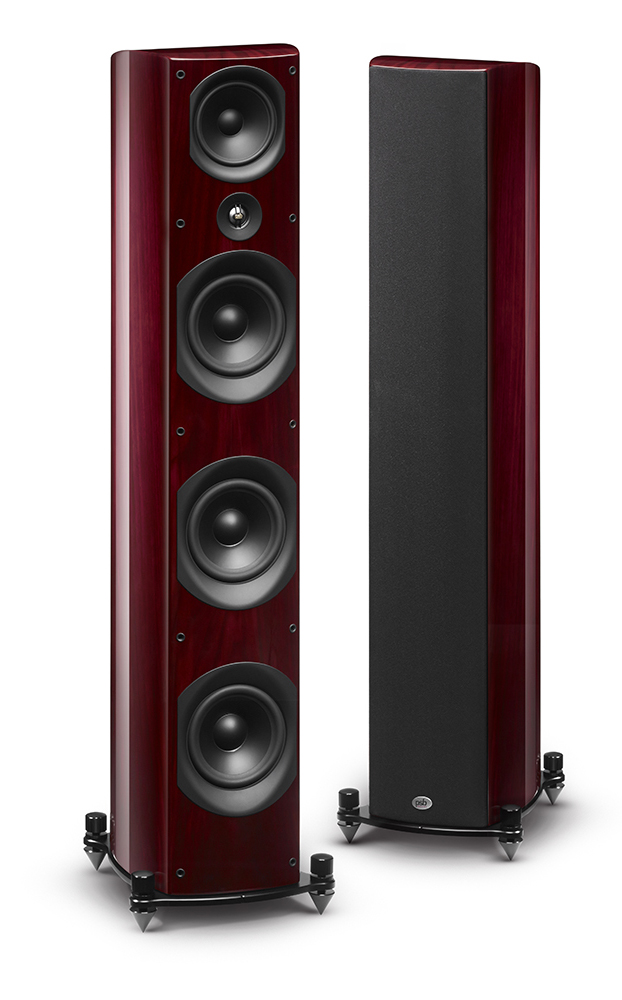
My next favorite speaker is the one that I’m currently listening to at home which is the Imagine T3. This speaker is an evolution of the approach I took on loudspeaker design, going back to just before the Stratus line. So basically, everything I’ve learned over that span I’ve incorporated into the design of the T3. I consider it the best passive expression of what I’ve been able to achieve so far with loudspeakers. Actually, I probably shouldn’t say that. What I should say is that the T3 has been out for about 5 years now, so it’s long overdue for an update (chuckle) and I won’t say anything more than that!
What do you see as the next step for wireless headphones/earphones?
When it comes to headphones, we’re continuing to do a lot of research and development. Some of the areas that I want to improve on are definitely getting higher-order noise canceling but also in developing interfaces so that the user can do some interesting things with an app to optimize his/her listening experience. There’s a lot that can be done when you start diving into the DSP and the wireless worlds. You have a lot of parameters that you can manipulate, and you can offer some of that manipulation to the end-user whilst giving them good advice on how to optimize or personalize their sound.
Secrets Sponsor
The new Bluetooth chipsets that have come out recently offer substantial improvements, one of which is significantly increased DSP capability. This not only helps with audio processing for music but also for phone calls with improved vocal clarity and external noise suppression, so improved communication overall. In the future, I can see the audio codecs, like aptX HD that we are using now, improving, and allowing for higher bitrate transmission. There are also some driver improvements that I can see happening in regards to the materials used in the driver diaphragm. We’re doing a lot of research when it comes to new materials, but I don’t want to let too much of the cat out of the bag just yet.
There is a movement going on now to take active noise cancellation and move it completely into the digital domain and I can certainly see several interesting possibilities to that approach. Bose has historically been the benchmark when it comes to noise cancellation with their Quiet Comfort series of headphones. Sony has been in the limelight recently with the performance they have achieved using their own in-house noise cancellation chip in their 1000 series headphones. There is also another platform that has been developed now that is capable of more than 40 – 45 dB of cancellation. So there is a bright future coming in the area of ANC. And circling back about the more powerful DSP that is available, applying that to ANC, allowing the level of ANC to be adjusted by the user to suit not only the environment but the user’s natural sensitivity to it. And to allow the user to dial in the amount of outside noise to allow in for a given situation is also something we are looking at. Sony and Bowers & Wilkins already do this to some degree on their ANC products. With new technology, we feel that this could be refined and taken even further. To make a long story short, I can say that PSB has “stuff in the oven” right now.
The headphone market continues to see growth with many diverse products that run the gambit in design and price. Do you see room for a statement, no-holds-barred PSB headphone design?
Well… let me just say… that “the oven is warmed up”! (Laughter)
I can say that I like what Focal has done, for example, integrating Beryllium into the drivers of some of their Hi-Fi headphones. But there are also other materials out there that I feel when used appropriately, can lead to even higher sonic performance. And beyond just materials, there are whole transducer technologies that we are researching that have linear performance capabilities that could be incredibly interesting if applied to headphone use, but that’s all I can tell you on that.
Another thing that is worth mentioning is the measurement tools, that we use during the development of these types of products, are starting to improve. The classic system that we used to measure headphones had a bandwidth limit for accuracy of about 8 kHz. And that was based on all the standards of measurement for this sort of thing being geared toward the development of hearing aids. An 8 kHz bandwidth was all that was required for hearing aids and, honestly, was probably overkill for that application. The focus of these tools was to help in improving the ability to hear as opposed to the fidelity of hearing if you will. Now companies like B&K and GRAS out of Denmark have developed couplers and tools to extend the measurement bandwidth and resolution out past 20 kHz. This basically changes the game and makes it easier and more accurate for us to qualify and quantify the high-frequency performance of a Hi-Fi headphone.
Surround sound and home theater are now well established and accepted when it comes to watching movies at home. Multi-channel surround sound for music stalled and never quite got the same acceptance. How do you feel about music in surround and do you see it as possibly having a resurgence at all?
Well, let me say this. Yes, I think multi-channel music is definitely a step up from two-channel in terms of envelopment and enjoyment. But music and music production are centered around obtaining mass appeal. And so, like a lot of other standards out there, they don’t become successful unless they appeal to the mass market. The recording and production of multi-channel music are not issues. It’s more the economics of how music today is purchased and consumed. No one is going to invest the time and money to produce more multi-channel music if most people listen to their music on a phone, portable player, or small home stereo. If I had to make the choice between two-channel and multi-channel for music, there is no question in my mind that (when done properly) multi-channel music is the superior experience. It’s just a fact. It simply boils down to the commercial aspect of it. In one respect, concert videos or musical events with a visual component are readily available in surround and if anything might lead to a resurgence of multichannel music playback, I suspect it would be that. And with the advent of streaming, it would be interesting if multichannel versions of albums were available for people to stream into their home theaters. I personally would love to see more multi-channel music.
You started as a violin player in your youth, what music does Paul Barton enjoy when he just wants to sit down and listen?
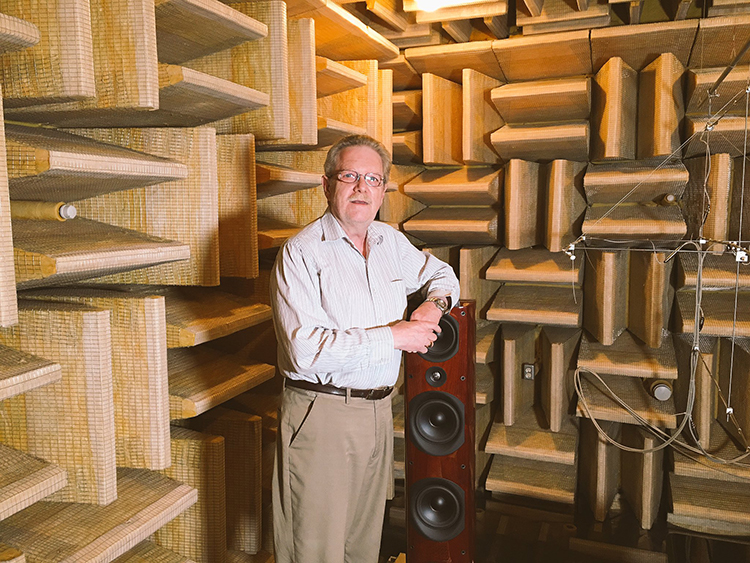
Well, like you say, starting as a violin player in my youth I do love listening to classical music, but I tend to listen to a little bit of everything. I had my Beatles and Led Zeppelin albums that I listened to when I was younger, and I played in a dance band up until 1980 so I’ve got an appreciation for a lot of different genres of music. But let me just say this, if I really do want to sit down and take off my critical hat which is sometimes very difficult to remove when I listen to music. You would think that someone like me, that does what I do, could just stop and listen to music for pleasure all the time but it doesn’t happen as much as you’d think. But when I listen for the sake of music, for enjoyment, I usually listen to something that I am very familiar with, something that I may have personally played at some time. And the reason I like doing that is that it brings back very pleasant memories, the meaningfulness of it allows me to leave the headspace that I’m in and I can go to where I was when I was performing those pieces. The friends I was with and the memories and experiences that it brings back are very enjoyable and precious to me. Music memory is in all of us and it can be a very powerful thing, sometimes whether we are conscious of it or not.
For the novice setting up a pair of speakers in a room, what advice would you give for getting the best results?
Speaking strictly for a stereo setup I would advise some of the following things. First, I think its important that the speakers be positioned slightly closer together than the distance your listening position is to them. In other words, the speakers should not be farther apart than the distance you are to the center of those speakers. The positioning between you and the speakers should make the shape of an Isosceles triangle as opposed to an equilateral triangle. I find that this helps solidify the center image when listening to music. Also, if you have the choice, you want the acoustic environment around both speakers to be as similar as possible. For example, if you have different distances to the sidewalls for your speakers it will skew the image more towards one side than the other.
When you attend an audio show, what are the things you look forward to the most and the least?
Ha! The thing I look forward to the least is the system setup. Not so much the heavy lifting aspect, but it’s the challenge of working with the variables and vagaries of hotel rooms (or what I call hostile environments) in order to obtain a good sounding room. If I can get a floorplan of the room ahead of time that helps a lot. In a perfect world, I would build my own room at a show and that would be ideal but that’s never the reality or the luxury of what we have to work with. And sometimes we have to contend with the difference in what we want to do to make the room sound good and what marketing wants to do to make the room look good. Those are the things I look forward to the least at shows.
Secrets Sponsor
The thing I like the best is, after the system is set up, not just listening but watching people’s reaction and body language when you present them with a good musical experience. It helps me gauge if something is working right or not, and I love to experiment with new demo material and see how people react to it. In particular, I enjoy people who I have no idea who they are, being in the room and I’m playing a demo piece and when it’s over they come up to me and they don’t ask what the speaker is like, they ask me, “what was that song you were playing?” That tells me that I’m successful at doing a proper demo. It’s that part of the show that I really enjoy. When you think about it, it helps me to better design products because I see firsthand the reactions to the music I’m playing which highlights the characteristics that the speaker can do. If people aren’t reacting to some aspect of the speaker that I think they should, then it tells me whether that part is important or not. Doing a show is part of the development process and its part of the learning experience of my becoming a better speaker designer. I don’t like designing things in a vacuum. These shows help me touch base with the real world and get all kinds of feedback. It’s incredibly valuable.
Many thanks to Paul Barton for his time and to Peter Hoagland for facilitating the interview.


